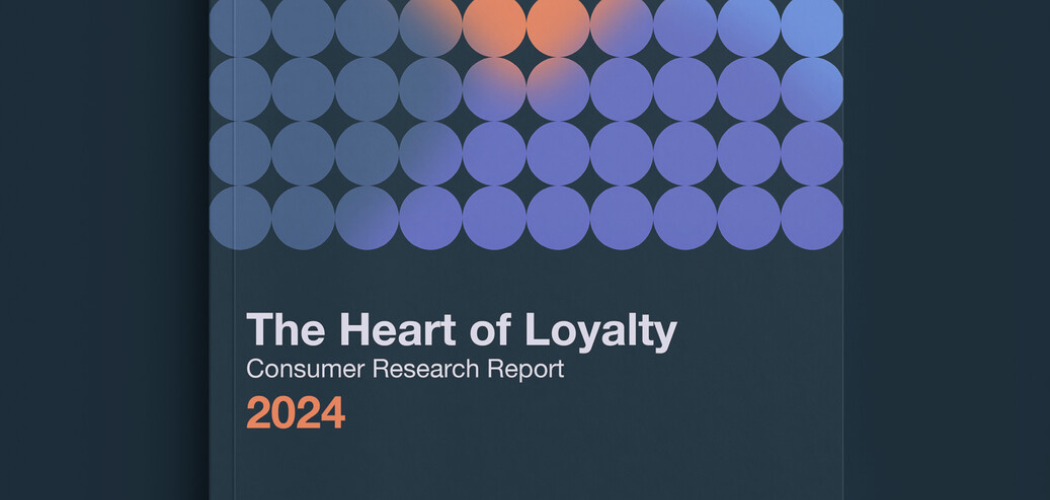Laura Miller, Kobie’s GM & SVP, Services, proves how gift giving is an ideal proxy for how to collect and use ZPD
Loyalty programs thrive on understanding your customers' desires. But how do you ensure you're offering what they truly crave? Enter Zero-Party Data (ZPD), the information customers willingly share about themselves.
I recently heard Laura Miller, Kobie’s GM & SVP, Services, present on the topic of ZPD at Kobie’s OnPoint Thought Leadership conference. Laura offered a fresh perspective on collecting ZPD, inspired by her success as a master gift-giver. Here’s the story.
A revelation in gift giving inspires an innovative approach to ZPD strategy
Laura is known among family and friends to be the consummate gift-giver. Her passion for personalizing gifts was founded in the realization that she often didn’t know enough about a person to make sure her choice of gift would be on target. Since she cared about the recipient, the quality of the gift mattered.
She began to think through what she knew about the person’s life stage, hobbies and passions. She collected some data and supplemented it by chatting with some of the person’s friends and family to validate her research. In the delight of the unboxing by her friends, Laura realized she had found the secret to mastering gift-giving.
Thinking about how to optimize the Zero-Party Data collected in loyalty programs, she found inspiration in her “methodology” for gift giving. Laura shared that one night she woke from a deep sleep with a clear vision of a solution for using ZPD and immediately shared the vision with her team and clients.
Laura told me “When I woke up in the middle of the night, I thought about how loyalty marketers want to collect data about customers on a personal level that fuels their ability to do more than talk about personalization, they can deliver it. I realized that we could apply a similar approach in business as I had done in my personal life to seek out the data points that matter most to serve our customers and then create a process to get the job done.”
New approaches to Zero-Party Data strategy
The metaphor of gift giving applies to marketer’s efforts to collect and leverage data to serve customers better. Loyalty Marketing has an element of gift giving central to all successful value propositions.
Rewards are the brand’s way of showing appreciation to customers and you must be certain that the rewards you offer (and how they are delivered) will delight your customer. That delight sparks feelings of trust and builds relationships that have emotional components and far surpass the impact of less generic options.
Relationships are strengthened as trust is established and Laura cautioned that the pacing of data collection is important to a successful ZPD strategy, “I do think it comes down to just asking people for the information, but we need to resist the temptation to ask for too many data points, too soon in a relationship.”
Laura went on to say that when we become focused on the quantity of data rather than the quality of what we need to know, we can end up at an inefficient crossroads. “Many brands are telling me that when they seek to collect too much data, they risk harming the brand reputation with the customer. Unless data is gathered with context, we could end up with massive files but not enough context to do more than test and learn with what we have.”
According to Laura, the best question to ask your team is “what would we do if we could only choose one data point? What would it be?” With that self-imposed limitation, you are forced to revisit your objectives and have a plan to execute based on that one data point to get a good result. If you stick to that process, it is likely that you will achieve greater marketing efficiency and get better financial results from your loyalty marketing efforts.
What are the data points that we should be seeking? Is there a secret sauce or “top ten list” of metrics that will help us streamline our ZPD collection efforts? Kobie has some of the answers in just released research “The Heart of Loyalty: 2024 Consumer Research Report”. Metrics like tenure and personal data that allows you to display recognition to the customer are high on the list. You can find the press release here and download the report here to learn more.
So, how do you execute your ZPD plan? Laura suggests treating your ZPD strategy as a holistic product strategy.
- Collect with Purpose: Determine what you want to collect for an express purpose and then identify the best channel or interaction in a customer journey to ask for the information.
- Stay Updated: Be vigilant and continue to update and adapt your understanding of customers. Laura pointed out “People will tell you one thing, and it might be an accurate response at the time, but people and circumstances change, and you have to keep up, or the truth you have today will be “yesterday’s truth” about the customers.
- Apply the “information boundary theory”: “Willingness to share data is influenced by circumstances. You must keep in mind that when your doctor asks for your height, weight, and blood pressure, it makes sense to respond. If you were asked for those datapoints when checking into a hotel, you would be offended.”
Laura added that relationship tenure is highly correlated to customer loyalty, saying “Recognize where you are in the journey with the customer. Asking 30 questions on an enrollment form is bound to fail, so why do so many loyalty programs fall prey to these ineffective tactics?”
Summing up the conversation, Laura shared a concise list of take-aways that create a framework for ZPD collection. The list included these items:
- Start small and select meaningful data points. Prove out your ROI with that data and then continue to build.
- Analyze your available behavioral and transactional data to understand the gaps you can close using ZPD. That’s the essence of Kobie’s Triple Play Data strategy.
- Strive to minimize ZPD waste. By shifting from a “big data” focus to a “marketing efficiency” focus, you’ll get better results.
If you apply the core elements of Laura’s gift-giving philosophy to your Zero-Party Data strategy, you have a solid foundation for success. In a world where customer expectations and sensitivities are high, Laura shows us how to increase customer understanding while ensuring we maintain strong customer connections.
That becomes the perfect gift to customers and in return, customers will “gift” your brand with more business. To learn more about Kobie’s approach to Zero-Party Data strategy and to possibly get your own strategic gift from Laura, please visit their website here.




